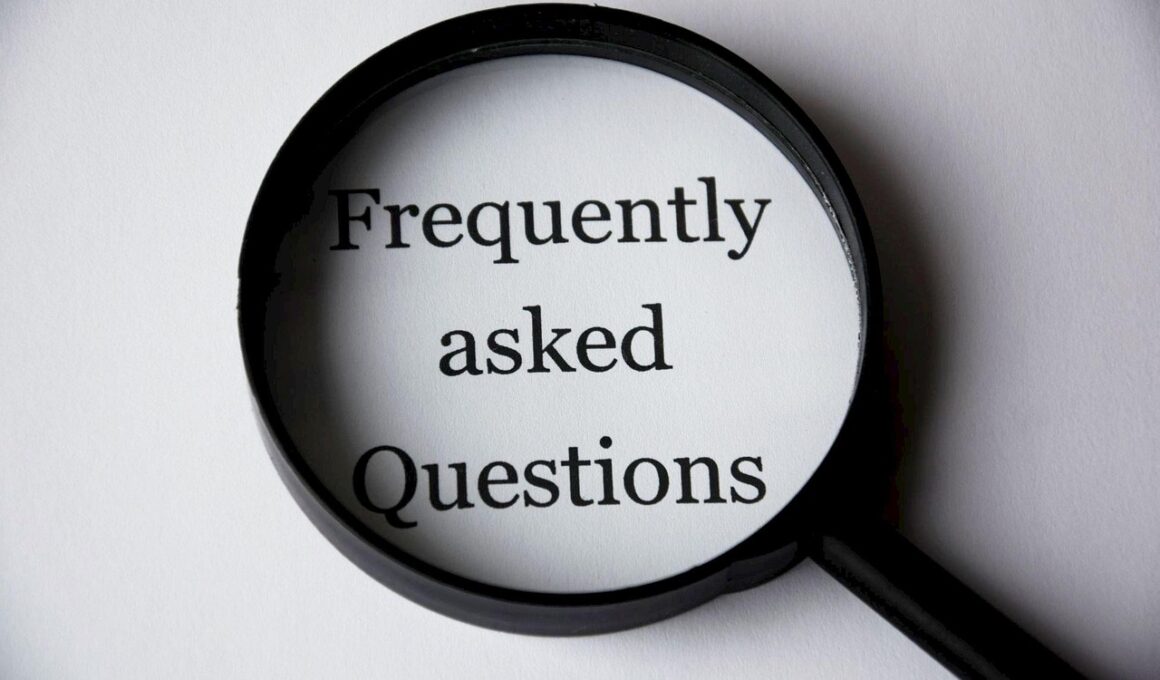Optimizing FAQ Sections for On-Page SEO in Marketing Websites
In the realm of Search Engine Marketing, establishing a solid foundation for your website’s on-page SEO is crucial, especially for marketing-focused websites. One highly effective yet often underutilized aspect is the FAQ (Frequently Asked Questions) section. A well-structured FAQ can significantly enhance user experience while simultaneously boosting your SEO rankings. By addressing common queries directly on your page, you create more immediate paths to information, increasing engagement. Furthermore, you can integrate keywords naturally into your questions and answers, making it easier for search engines to associate your content with relevant searches. This strategy not only serves users looking for specific information but also encourages them to stay on your site longer. Increasing dwell time signals search engines that your content is valuable, helping improve your SERP positions. Thus, including optimizing FAQs is not merely optional; it becomes a vital part of your overall SEO strategy. In this article, we will explore some of the best practices for creating an effective FAQ section tailored for marketing websites and how to leverage it to strengthen your on-page SEO initiatives effectively.
Identifying Relevant Questions
The first step in optimizing your FAQ section is identifying the most relevant questions to answer. To accomplish this, research various queries that your audience frequently looks for concerning your products or services. Utilizing tools like Google Keyword Planner, Answer the Public, or even your existing site’s search data can provide insights into common inquiries. Once you identify these queries, prioritize them based on volume and relevance, focusing on what users truly want to know. This targeted approach ensures that your FAQ section addresses pain points and provides immediate solutions, enhancing user satisfaction. As you craft those questions, maintain a natural language tone, as this aligns more with how users search online. Additionally, consider including variations of key questions to capture diverse search intents. For example, instead of a generic question, try incorporating specific phrases or terms used in everyday conversations. This strategy will make your content more relatable and increase its effectiveness in search engines. These steps will lay the groundwork for a compelling FAQ that meets user needs and drives organic traffic.
After identifying relevant questions, crafting well-structured answers is equally essential. Aim for clarity, conciseness, and relevance in your responses. Begin each answer with a direct response to the question posed and then elaborate with helpful information. Use bullet points or lists within answers to break down complex ideas or processes into digestible chunks. This approach enhances readability and allows users to quickly scan for the specifics they seek. Moreover, integrating links to relevant pages on your site can provide users with additional context or information. This not only enhances their experience but may also reduce bounce rates by encouraging deeper exploration of your site. Ensure that answers are keyword-rich yet naturally phrased, subtly incorporating SEO techniques without compromising readability. Furthermore, consider the length of your responses; while comprehensive information is beneficial, overly lengthy answers may overwhelm users. Aim for brevity while ensuring that extensive answers provide sufficient information. Remember that both users and search engines prioritize quality content, so maintaining this balance is essential for optimizing your FAQ section.
Utilizing Structured Data Markup
Implementing structured data markup for your FAQ section is an excellent strategy, as it helps search engines understand the content better. To do this, use schema markup, specifically the FAQPage schema, which enables search engines to interpret the questions and answers more effectively. When search engines recognize your FAQ section through this markup, it can enhance visibility in search results, potentially displaying your FAQs as rich snippets. These snippets often stand out visually, improving the chance of user clicks. To implement this schema, you can either manually add microdata to your HTML or use plugins that support schema for various platforms like WordPress. Including FAQ structured data can also boost your chances of appearing in Google’s rich answers or featured snippets, increasing search traffic significantly. Besides boosting visibility, structured data allows for better indexing of your content, which can enhance user experience further. Thus, incorporating structured data into your FAQ section serves as both an optimization tactic and an enhancement for user engagement across your marketing website.
Additionally, regularly updating and monitoring your FAQ section is critical for maintaining its effectiveness. Trends and user inquiries change over time, which means your FAQs should evolve accordingly to remain relevant. Schedule periodic reviews of your FAQ section to assess whether the questions remain pertinent and whether the answers are still accurate and useful. Use analytics tools to track user interaction with your FAQ section, such as which questions generate the most views and how users engage with the content. This data can reveal emerging trends in user behavior or new questions that may have surfaced. By being proactive about this monitoring process, you can keep your content fresh and ensure that it continuously meets user needs. Consider allowing user-submitted questions or feedback as an additional way to enrich the content. Engaging with your audience directly can help uncover gaps in your FAQ that may be addressed, enhancing the section’s value even further. Thus, maintaining an agile approach to your FAQ section ensures it remains a relevant resource for users.
Enhancing User Experience through Design
While the content of your FAQ section is essential, its design also plays a critical role in user experience. A well-organized FAQ page with good design elements makes a significant difference in how users interact with the information. Use easy-to-read font sizes and styles, along with organized sections that categorize similar questions together. Implementing accordions to expand and collapse answers can offer a cleaner interface, allowing users to navigate through questions efficiently without feeling overwhelmed. Color-coding or visual indicators can also guide users to specific sections of interest, streamlining their experience. Moreover, ensuring the FAQ section is mobile-responsive is vital, as users increasingly rely on mobile devices for information. Test the accessibility and responsiveness of your FAQ section across various devices and browsers to provide a seamless user journey, regardless of how they access your site. Prioritizing design elements leads to better user retention rates and gives visitors the tools they need to find answers quickly, boosting overall satisfaction with your marketing website.
Lastly, promote your FAQ section across various channels to maximize its reach and effectiveness. Use social media platforms to share links directing users to your FAQ page, particularly when launching new products or addressing common queries related to your field. Incorporating these links in email marketing campaigns can also help guide customers to find information easily, ultimately improving user engagement. Consider creating video content that combines FAQs with visual tutorials, enhancing the explanation and capturing users’ attention. Videos can be particularly engaging and can spread through various digital platforms, increasing traffic to your FAQ section. By integrating these promotional strategies, you not only optimize the visibility of your FAQ but also drive user traffic, improving your on-page SEO ideas significantly. Consistent promotion ensures that users are aware of this valuable resource, allowing them to leverage the information provided effectively. Therefore, utilizing your FAQ section as both a content piece and a means of engagement can play a critical role in enhancing your marketing website’s overall performance.
Conclusion: Importance of an Optimized FAQ Section
In conclusion, optimizing your FAQ section is not just an SEO tactic; it’s a strategic move that enhances the user experience and improves engagement on your site. A well-curated FAQ page addresses common user concerns, making information accessible and easy to find. It also signals to search engines the relevance of your content, promoting better ranking opportunities. By implementing strategies like identifying relevant questions, utilizing structured data, and engaging in consistent promotion, you empower your website to serve its visitors better. This proactive relationship with users fosters trust and enhances interaction levels, ultimately leading to higher conversion rates. It’s essential to remember that optimization is an ongoing process; hence, continually monitor and refresh your content to stay ahead of new trends and changing user needs. In the fast-paced digital landscape, ensuring that your FAQ section remains relevant is key to utilizing it as a powerful asset for your marketing website. Thus, prioritize the development of a robust FAQ section that contributes positively to your on-page SEO efforts, creating a win-win for your users and your goals.


